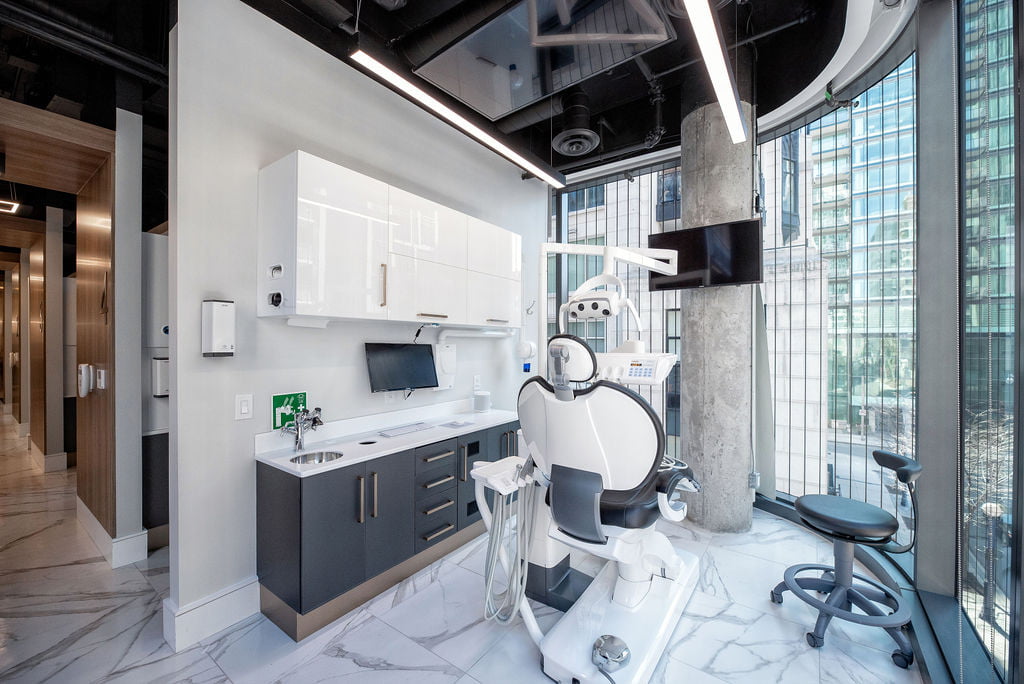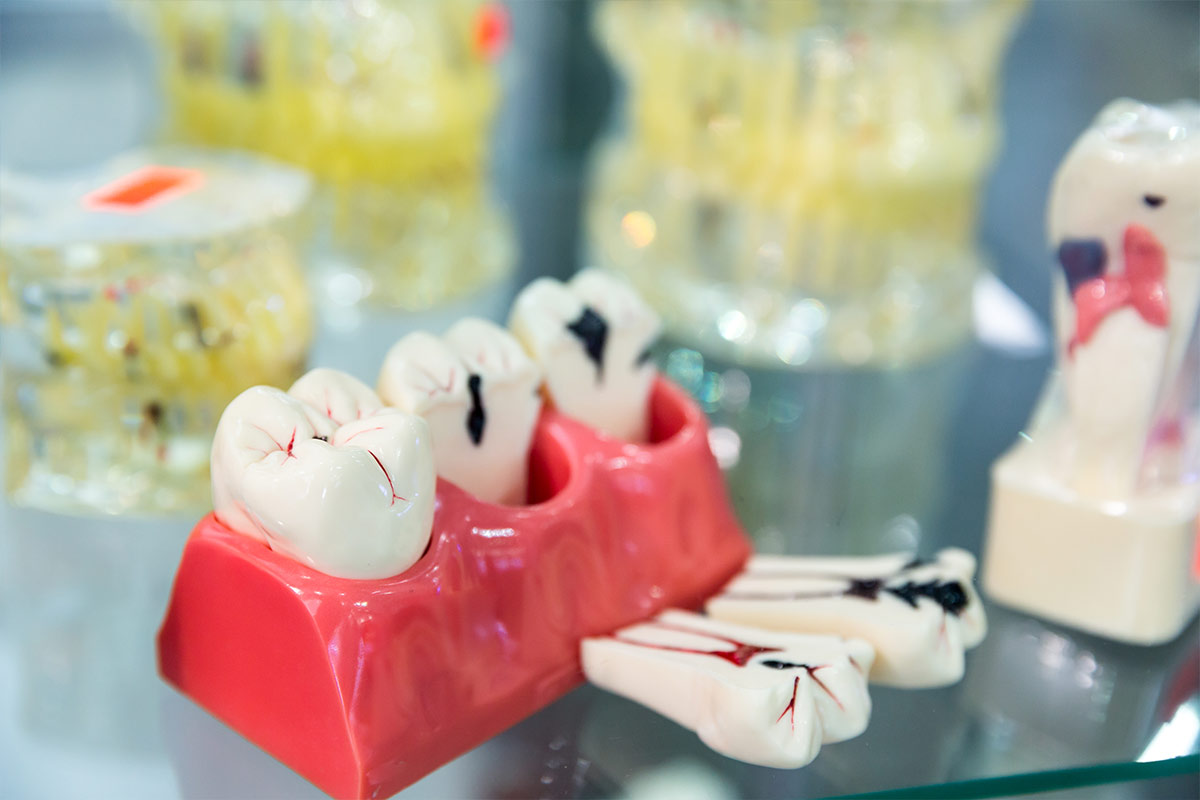WELLNESS TRENDS IN DENTISTRY

DR. KAVEH NEDAMAT
Dr. Nedamat has been in private practice since 2010 and has owned and managed multiple successful dental practices across Ontario. Currently, he is the co-owner of Glasshouse Dental Yorkville located in Toronto. He is also an oral health consultant in the medicinal cannabis sector.
What a world we live in. I can use my watch to order a car to pick me up, walk into a coffee shop and grab my ready-made drink off the counter and even tell my speaker to order me more toothpaste and have it on my doorstep by the time I return from work. Technology has certainly made life more efficient. And with this infiltration of technology into our daily lives, there is a huge push towards simplifying other aspects.
There is an obsession with “natural†and “organic†in a way that recalls simpler times. This feeling of nostalgia often ignores the advancements modern science and medicine have made in order to improve our quality of life and extend it. For example, the average global life expectancy in 1800 was just 28,5 years while today it sits at roughly 71.5 years.
This is of course even more in industrialized nations, sitting at just over 82 years in Canada. We have seen what a “natural†and “organic†diet and way of life has done. There are entire history books filled with it. However, is this a place for those prevailing sentiments to be married with science to further improve our lives? I would suggest yes.
Here we will briefly discuss three trends that pertain to wellness and oral health. Some of theses trends can have a serious negative impact on oral health, others may not have any benefit beyond a placebo effect. And still, keeping an open mind while insisting on science-driven decision–making, may even open up a new world of possibilities and improved treatment options for our patients.
Oil Pulling
While the merits of oil pulling are controversial, from a practical perspective, the time involved in performing it as prescribed by proponents really seems prohibitive. The idea that patients often claim they don’t have enough time to floss daily but, would spend 20-30 minutes swishing oil in their mouths doesn’t seem to be a viable long term option.
In 2011, Asokan et. al. released a study comparing the effects of oil pulling on halitosis and a certain type of bacteria found in the mouth. The results were not overwhelming and the sample size was.

Forum Magazine
Extremely small (10 patients in each group). The author claims that oil pulling seems to have a similar positive effect to another mouth rinse, chlorhexidine. The difference? You rinse chlorhexidine for 30 seconds, not 20 minutes.
The verdict? Perhaps oil pulling does have a mild positive effect although the evidence is weak. That being said, if you
already practice excellent oral hygiene, including daily flossing, and you want to spend 20 minutes swishing sesame oil in your mouth, more power to you. You can even make it a ritual and practice mindfulness in that time and that is certainly known to have a positive effect.
Activate Charcoal
Teeth whitening has now become commonplace in a patient’s treatment plan. Patients are in search of a brighter, more vibrant smile that exudes health.
While traditional methods of in-office whitening with a light-activated hydrogen peroxide gel are as common as ever, there has been a huge movement towards the use of activated charcoal as a stain remover.
There certainly may be some merit behind this claim as activated charcoal is used in medicine to absorb toxins and even to treat certain drug overdoses. Its ability to absorb pigment is what makes it useful in dentistry. So what’s the drawback? It’s highly abrasive. In fact, it’s so brasive that
long-term brushing with an activated charcoal paste can lead to the removal of the enamel layer on teeth. Following this trend without critically assessing the risks would result in permanent damage to your vital tooth structure, not to mention ultimately causing your teeth to appear more yellow once the enamel has been brushed away.
Also, consider staying away from powders as there is the possibility of particles becoming lodged under the gums leading to inflammation and subsequent attachment loss. Instead, look for a product that has research behind it, from a reputable company. Additionally, it may be beneficial to use a very specific type of brush that has very many soft bristles to aide in this process.
Cannabis and Oral Health
Often times, people are surprised when I mention the oral health benefits of cannabis. They cannot reconcile the idea that cannabis could be beneficial as they link it with smoking.
However, there are alternative ways to deliver cannabinoids that can provide benefit. I liken it to water. Water is the most essential substance for human life and yet, inhaling it can lead to death. Cannabis is similar in that the traditional method of consumption, smoking, has been linked to gum disease, decreased salivary flow, increase cavities, and
even oral cancer. However, while it’s i its early days for this research, there is a suggestion that certain cannabinoids can actually help mediate the inflammation in the gums that leads to gum disease and bone loss.
Moreover, there is also an antibacterial property that may prevent cavities. So while, the most “natural†and traditional way to enjoy the benefits of cannabis has been smoking and thus, detrimental to our oral health, with modern extraction methods and product development, we can actually improve upon this ancient herb and present something to the consumer that may actually be an upgrade to what else is commercially available.
Look out for new products starting to become available in early 2020, however, please assess the science behind each product and its claims.
While this desire to get back to basics seems to be a predictable human
response given the additional stresses created in this hyper-connected world, not all decisions being made are informed. This concept extends to dentistry as well. The dental community is guided, like the medical community, by science. More specifically, reproducible, peer- reviewed
scientific studies help shape our policy and treatment recommendations.
As such, when a new trend arises, often times dentists are skeptical to embrace this without the necessary science to back it up. However, patients are more and more involved in their own care these days and with information readily available at our finger tips, we have a real challenge deciphering what is and isn’t real.
The key is to listen to our patients and understand what they are asking and their motivation behind it. It’s our jobto help provide them with the most up-to-date information so as to arm them to make the best decision for their oral health.



